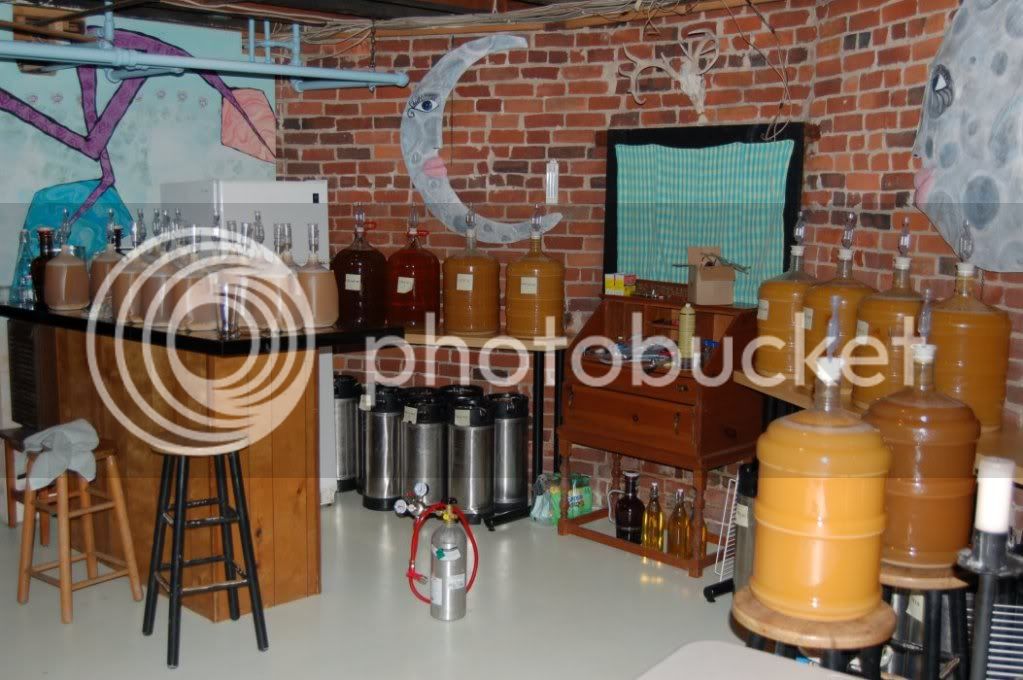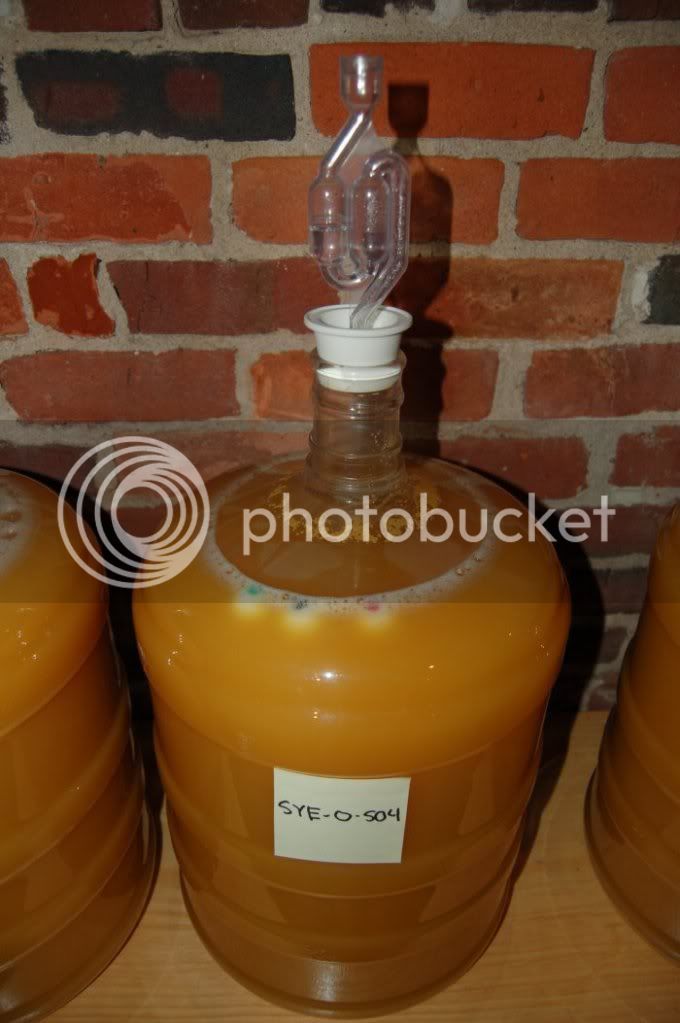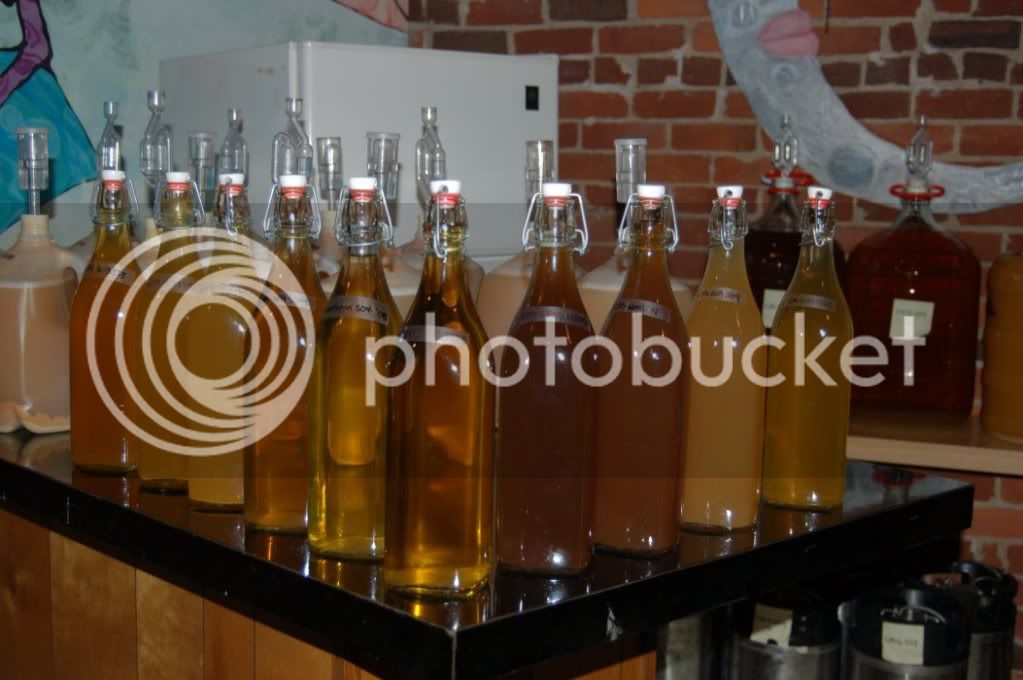I just cold crashed the first batch from the Oct 8th pressing. Temps have been nice and cool - around 60-65 for the past 10 days.
From left to right, status of keg batches is as follows:
Two batches from the 9/14 pressing which are clearing in secondaries,
Wild yeast batch This one started fermenting hard, so I moved it to the back porch several days ago. Now its fermenting slow and steady at about 45F. Havent checked sg yet
Wildflower Honey, S04 yeast. 1.024 still too sweet, honey/apple balance is good.
Turbinado/Dextrose, US05 yeast. 1.020, has nice sweet/sour taste. This would be good with raspberries, which Im planning to add before crash, so I can get rid of the raspberry pulp at the same time as the crash
S04 yeast, no sugar, crashed at 1.010, could have maybe gone a little earlier, like 1.012 or 1.014. Has good apple taste and a sour dry finish. Since none of the others will need to stop for a while, Ill give this a full 48 hours in the fridge.
Turbinado/Dextrose, Nottingham yeast. 1.030 , very smooth but too early to say how its going to go
No sugar, 3068 yeast. Still only at 1.040. Tastes good. Im pretty sure that its the wild yeast that gives the 3068 a signature sour taste probably because the 3068 takes so long to get going, so the wild yeast has more expression before the 3068 takes over
The two carboys on the right in the foreground are from a cider pressing party last weekend. The apples, in order of quantity in the mix are Cameo, McIntosh, Fuji, Gala, Jonathan, Grimes Golden, Winesap, Granny Smith, sg is 1.052, ph was 4.1 which is surprisingly high, because the finish is tart on this mix. The carboy in the foreground has no sugar and S04 yeast. Its at 1.018 and tastes a little sour. The one next to it is another wild yeast ferment, which so far has been nicely slow and steady havent checked the sg yet.
Im really happy with the wheat yeast test batches. Its a little early to say for sure, but I think several of these are going to be as good or better than the 3068 for a sweet style. The 2001 pilsner doesnt really work for a sweet cider, but its really good in its own right more of an apple beery sort of taste. Probably would work well for a graff style, although it did put out a little more of a stink than the others. The only one that Im not crazy about is the 3942, which was a little too sour and not much apple taste compared to the rest.





